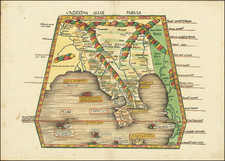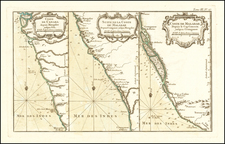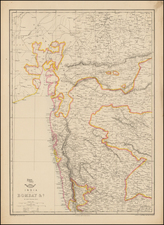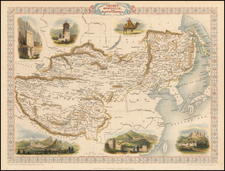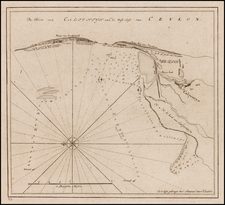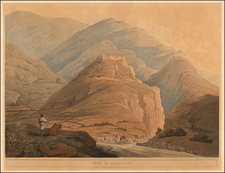Scarce map of the town of Kozhikode, on the south Malabar Coastline, which appeared in Francois de Belleforest's Cosmographie Universelle De Tout le Monde.
Kozhikode is a town with a long recorded history. From time immemorial, the city has attracted travellers with its prosperity. It has traded in spices like black pepper and cardamom with Jews, Arabs, Phoenicians, and Chinese for more than 500 years. As Kozhikode offered full freedom and security, the Arab and the Chinese merchants preferred it to all other ports. The globe-trotter Ibn Batuta (A.D. 1342-47) said: "We came next to Kalikut, one of the great ports of the district of Malabar, and in which merchants of all parts are found."
Kozhikode was the capital of Malabar during the time of Zamorins (in Malayalam 'Samoothiri'), who ruled the region before the British took over. The city's first recorded contact with Europe was when Vasco da Gama landed at Kappad in May 1498, as the leaders of a trade mission from Portugal. He was received by the Zamorin himself.
Vasco da Gama arrived at Kozhikode on May 20, 1498 and obtained permission to carry out trade. He landed at a place known as Kappad, near Thiruvangoor. The Arabs, sensing the threat posed by Portuguese to their commercial supremacy, opposed the Europeans. Bitter fights started between Portuguese and Arabs. The Portuguese went to Cochin for trade and the Raja of Cochin had an alliance with the Portuguese with the aim of attaining sovereignty from Zamorin.
The hostilities between the Zamorin and the Portuguese continued for many decades and the role played by the Kunjali Marakkar in these battles can not be forgotten. Kunjali Marakkars was the hereditary admiral of the Zamorin, and organized a powerful navy to fight the Portuguese. Kunhali II, was one of the greatest of Zamorin's Admirals. Kunjali III built a fort at Kottakkal and enjoyed all the privileges enjoyed by the Nair chiefs. His actions against the Portuguese fleets caused heavy damages to Portuguese shipping and trade from Kozhikode.
The Portuguese built a fort at Chaliyam at the mouth of the Beypore River in the middle of the Zamorin's territory. Due to the prolonged struggle, Zamorin's military strength deteriorated and he entered into a treaty with them in 1540, which allowed the Portuguese to have a monopoly over trade at Kozhikode port. The peace was temporary, and war broke out again, resulting in the demolition of the Chaliyom Fort in 1571, by the Zamorin forces. The battles between the Portuguese and the Zamorin continued till 1588 when the Portuguese were allowed to settle down at Kozhikode. However Kunjali opposed the move. At around this time, Kunjali IV declared himself as the 'King of the Moors' and moved away from the Zamorin. The Zamorins now took the help of the Portuguese to destroy the powerful Kunjalis. In 1600, Kunjali surrendered and was executed.









